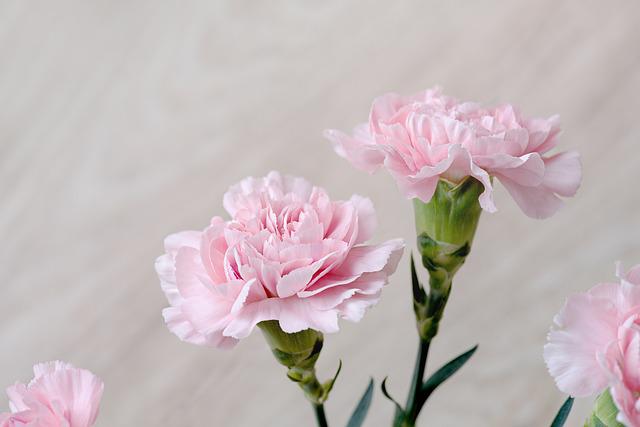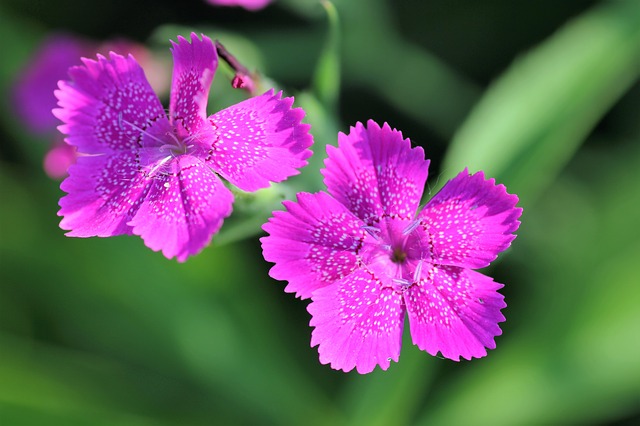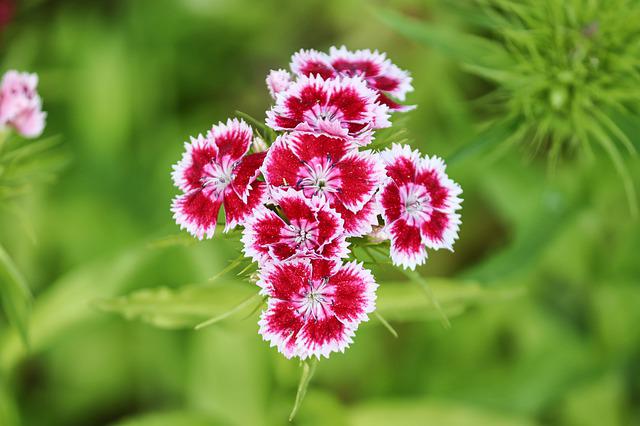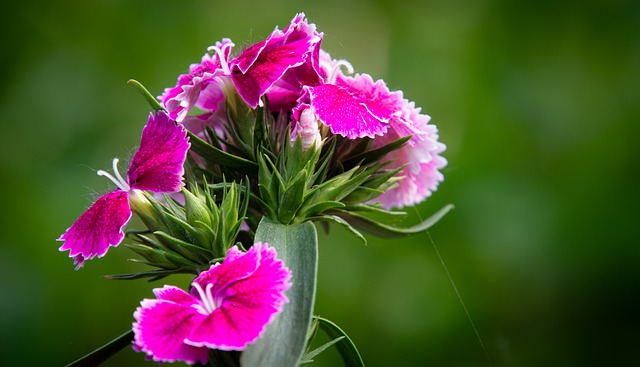Do Carnations Spread? Understanding Growth Habit

After being planted, carnation bushes tend to spread clump-forming habits, so it’s crucial to space them out sufficiently. The plants’ growth may be hampered if they are too close because they may block each other’s access to sunlight. Carnation plants are also relatively hardy and can tolerate many conditions, so they will likely reseed themselves if you remove some of their runners. Carnations have a short lifespan in comparison to other flowering plants. They typically only bloom for three to four years before they start to fade.
Regularly pruning, fertilizing, and watering will help keep your carnation bushes in shape and minimize their spreading tendency. If you have a sizable area you want to cover with carnation plants, purchasing several specimens may be more efficient and dividing them up later.
Table of Contents
Types of Carnations
For their vibrant hues and wide range of available varieties, carnations are a garden staple. There are various annual, biennial, and perennial carnations available, so you can find one that works in your garden no matter the size of your plot. These adaptable plants thrive in both ground-level flower beds and vertical containers.
Large-flowered, spray, and dwarf-flowered carnations are the three most common types. Carnations with large flowers, also known as florist’s carnations, have a single large bloom at the end of a stem that can reach a height of 18 to 24 inches. Dwarf and spray carnations grow to 9–12 inches and bear numerous miniature carnation flowers along each stem. Common garden varieties include these. Countless varieties of carnations exist.
Some Sample Varieties:
Border Carnation
Dianthus caryophyllus
Carnations are perennial herbaceous plants that can also be grown as annuals. They prefer temperate summer climates and organic-rich, gritty, well-drained soils. There are numerous colors and sizes of carnation cultivars and varieties. The florist industry cultivates a taller variety of carnations (3 to 4 feet) for use as cut flowers and boutonnieres. Carnations are excellent for adding vibrant color to a sunny border or patio container. Removing spent flowers can extend the blooming period, and pinching out the plant’s center will encourage bushy growth.
Carnations are sensitive to high temperatures and may not be the best choice for a southern garden. They bloom in the middle of summer. Preferring sun, but cool temperatures and neutral to slightly alkaline, well-drained, moist soils. Rust and crown rot are potential issues.
Deptford Pink
Dianthus armeria

This annual or biannual plant is about 1-2 1/2 feet tall and looks slim. It has few branches above the pairs of leaves that are far apart. The stems are stiff, thin, and round. They have small white hairs in patches under each pair of opposite leaves. Other than that, they are mostly glabrous. The opposite leaves can be up to 3 inches long and 3 millimeters wide. They are straight (but wider at the base), stay in place, and are usually hairy. Each pair of leaves has a sheath at the base that wraps around the stem.
The stem is wider and has a few knobs. Small clusters of pink flowers end the upper parts of the stems. The flower stalks (peduncles) are hairier than the stems, but other than that, they look the same. About a third of each flower “The flower is about 8 mm across and has five petals spread out, a green tube-shaped calyx with 5 teeth, ten stamens with pink anthers, and two styles. There are small white dots on the pink petals. At the bottom, each petal is shaped like a wedge, and as it gets closer to the edge, it gets wavy. About 34 of the calyx is pubescent “long. Along its length, there are between 10 and 22 small nerves. At the bottom of the flower, there are usually three thin bracts that look like leaves and are about as long as the calyx. Most flower clusters and bracts have a V shape. A long capsule replaces each flower with a lot of seeds inside. Each seed is round or reniform, flattened, and covered with small bumps. A thin taproot makes up the root system. This plant grows by making new seeds.
Dianthus American Pie
There are three different colors of American Pie dianthus:
- “Bumbleberry Pie” has rich rose-pink blooms with bright pink centers that make it stand out.
- “Georgia Peach Pie” has blooms that are a pale blush pink with bright coral centers.
- “Key Lime Pie” is a white flower with a green center that looks like an apple.
The extra-large flowers are on strong stems that don’t bend over. The plants are small and round (11 x 11 inches), making them easy to pick, and the flowers last for a long time when cut. They look great in containers, pots, garden edges, and modern landscapes.
Dianthus is easy to bloom from the middle of spring to the middle of summer. Six to eight weeks at 41° F is a good time to harden off the American Pie collection. Most flowers and flowers that look the same will come from using vernalized liners.

Maiden Pink
Dianthus deltoides
It is essential for beautiful blooming that maiden pink carnation grows in warm, sunny areas.
When planting, immerse the clump in water for one to two minutes before placing it in a mixture of soil and garden soil. When planting in planters or containers, it is preferable to use only soil mix.
Planting can be done in the fall or spring, taking care to maintain a distance of 8/10 inches (20/25 cm) between each plant. Beginning in May, perennial carnation cuttings are incredibly simple to perform. They can also be propagated through fall crown division.
Sweet William
Dianthus barbatus
It is a short-lived plant that usually grows every year. It grows well in sandy, slightly alkaline soil, in full sun or partial shade, and in places where summers are hot. The flowers grow together in a round, full clusters. The colors are white, bright red, bright purple, and sometimes two colors. There are many different kinds of cultivars. Some have double flowers or small flowers. The name “barbatus” comes from the spikes or beard-like growths on the petals.
Crown rot and rust can happen, especially if the soil doesn’t drain well. Snails and slugs can be a problem with a lot of shade. If you eat this plant, it will make you sick. It also makes the skin red and itchy for a few minutes.

